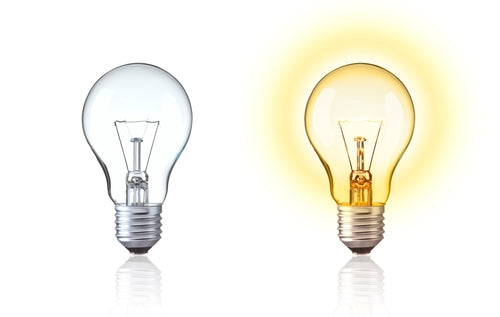
What does IP rating mean for lights?
You may have encountered the term ‘IP rating’ when shopping for lights and electronics. If you’re unsure what this means, you will most likely have ignored it up until now.
However, IP rating is important when it comes to purchasing items that you will be using often. You will see that the IP rating is specified on most of our products, such as our LED lighting.
Stick with us to discover what this specification means and why it’s important when choosing a light for your home.
What is IP Rating?
IP stands for ‘Ingress Protection’ rating, a two-digit grading system applied to the enclosure of an electrical or mechanical item to indicate its resistance to damage.
This includes dust, water damage, and accidental contact. In the context of lighting, IP rating is especially important as lights are often exposed to elements such as dust, dirt, and water.
This originated from the International Electrotechnical Commission (ICE) standard, which aims to provide a clear understanding of the capabilities of an enclosure without relying on terms such as ‘waterproof.’
Deciphering IP Rating Codes
The First Digit - Solid Particle Protection
This indicates the level of protection the enclosure provides against access to hazardous parts (e.g., electrical conductors, moving parts) and solid particles entering and damaging the enclosure.
The scale goes from 0 (no protection) to 6 (full protection against dust, dirt, and other particles).
The Second Digit - Liquid Ingress Protection
This indicates the level of protection of the equipment inside the enclosure against harmful liquids.
The scale goes from 0 (no protection) to 8 (protection against continuous submersion in water under specified manufacturer conditions).
How to Understand the IP Ratings of Lights
It is important to consider the IP rating to choose the best lighting for your home needs.
Here is an easy-to-follow guide to understanding IP ratings:
1. First Digit
- 0: No protection.
- 1: Protection against solid objects over 50mm (e.g., hands).
- 2: Protection against solid objects over 12.5mm (e.g., fingers).
- 3: Protection against solid objects over 2.5mm (e.g., tools, wires).
- 4: Protection against solid objects over 1mm (e.g., small wires).
- 5: Dust protected; limited ingress permitted.
- 6: Dust-tight; complete protection against ingress.
2. Second Digit
- 0: No protection.
- 1: Protection against vertically dripping water.
- 2: Protection against dripping water when tilted up to 15°.
- 3: Protection against spraying water up to 60° from vertical.
- 4: Protection against splashing water from any direction.
- 5: Protection against low-pressure water jets from any direction.
- 6: Protection against high-pressure water jets and heavy seas.
- 7: Protection against the effects of immersion between 15cm and 1m.
- 8: Protection against long periods of immersion under pressure.
Choosing the Right IP Rating for Your Lights
Indoor Lighting
Low IP ratings are suitable for Indoor lighting as they aren’t exposed to much dust or moisture. Thin includes IP20 and IP30 ratings.
Outdoor Lighting
Moderate to high IP ratings for outdoor lighting, such as IP65 and IP66, are needed. This is due to exposure to harsh weather conditions and dust.
Specialised Lighting
Higher IP ratings are necessary for areas such as bathrooms and kitchens with high moisture and humidity exposure, such as IP44 and IP65.
Industrial or Harsh Environments
For areas exposed to extreme conditions, such as water submersion or high-pressure jets, very high IP ratings of IP67 and IP68 are vital.
Common Misconceptions About IP Ratings
There are common misconceptions about IP ratings that can lead to the incorrect usage of devices and safety issues.
Here are a few myths surrounding IP ratings to help you gain a better understanding of it:
- Ratings indicate complete water resistance: No device can be completely waterproof. Even the highest IP rating (IP68) only indicates protection against water submersion under specific conditions.
- The higher the IP rating, the better: IP ratings are tested under specific conditions. Therefore, it may not perform the same in your home.
- All Products with the Same IP Rating Offer Equal Protection: Different manufacturers will use different guidelines to apply and interpret IP ratings. Always read the precise details for each product.
- IP Ratings Include Corrosion Resistance: IP ratings don’t account for corrosion resistance as they only specify a product's resistance to water and dust.